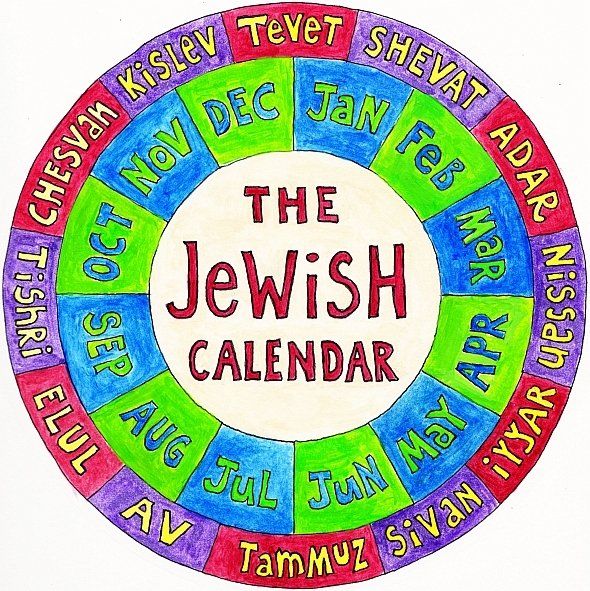Schism and the Calendar

Traditionally considered to have been established by fourth-century sage Hillel II, the contemporary Jewish calendar provides for an additional month of Adar seven times in nineteen years. (This year is the nineteenth.) It is worth recalling, though, that in earlier times there was no set calendar. Instead, a beit din, Jewish court, would deliberate and, after extensive analysis, determine whether or not to declare a leap year. The Gemara (Sanhedrin 11b) details a number of considerations that guided the judges’ deliberations, among them: so that the roads are passable for the Passover pilgrimage to Jerusalem, to ensure that Pesach falls out in the spring, and in order that the supply of new grain not be exhausted before Passover.
This process, which receives fairly extensive treatment in the Gemara (Sanhedrin 10b-13b), is curious in numerous respects. Pirkei de-Rabbi Eliezer (7) strangely terms the intercalation “sod ha’ibbur,” “the secret of the leap year,” suggesting that the dates of the leap years were transmitted by Adam Ha-Rishon until they reached the rabbis. Why all the secrecy?
The opening Mishnah in Sanhedrin, moreover, cites a dispute as to the minimum number of judges required to adjudicate a case of ibbur ha-shanah. Rabbi Meir maintains that, as elsewhere, a minimum of three judges is required. Rabbi Shimon Ben Gamliel though asserts that while three judges open the deliberations, five further consider the case’s merits, and seven make the final decision. R. Shimon Ben Gamliel’s highly unusual procedure distinguishes ibbbur ha-hodesh from the dozens of cases discussed in that first Mishnah: nowhere else are judges added as the case unfolds.
The Talmud (ibid., 10b) suggests two sources for the 3-5-7 structure: birkhat kohanim, the priestly blessing, which consists of verses of three, five and seven words respectively; and biblical sources that enumerate three, five and seven as the number of counselors who advise a king. Both associations, however, are left unexplained. What links the priestly blessing and amount of royal advisors to the minimum number of judges required to intercalate a month?
One plausible approach to accounting for ibbur ha-shanah’s peculiarities emphasizes the sheer complexity of the calculations involved. As Tiferet Yisrael (Yakhin Sanhedrin 1:13) notes, given the wide range of factors coupled with multiple Amoraic calculations for reconciling the lunar and solar calendars, adjudicating a case of intercalation involves an exceedingly high degree of difficulty. The sophistication helps to account for the additional judges, who were summoned, on the view of many rishonim, if the original three were to hit an analytical brick wall. Still, this approach falls short in that it fails to account for the parallels to birkhat kohanim and royal advisors, and does not explain the “secret” of the leap year.
A second perspective builds on Rashi’s commentary regarding the royal counselors: “We have found that the earthly kingdoms include three, five or seven appointed [advisors]… and adding a month belongs to the activities of the heavenly academy, to set the order of years in their place” (10b s.v. sheloshah). Rashi implies that ibbur ha-shanah is a quasi-divine activity, in which a terrestrial court effectively tampers with the celestial realm. Tosafot Yom Tov (Sanhedrin 1:2 s.v. bishloshah) cites a commentator who goes so far as to compare the severity of “changing the year from its natural course” to “capital punishment.” In this sense, the parallel to birkhat kohanim is evident: just as the priestly blessing bridges the terrestrial and extraterrestrial domains by channeling God’s presence into this world, so too ibbur ha-shanah bridges that gap in the opposite direction, empowering humanity to determine the calendrical cycles. Playing God qualifies the court as determining “the secret of the leap year.”
A third approach begins with a fundamental observation: disputes concerning the calendar carry the potential for schism. A unified calendar is a sine qua non for a unified people. Communities that observe Yom Kippur, celebrate the Seder, and read Lamentations on different dates will remain members of a single nation for only so long.
Jewish history provides more than ample evidence for this thesis. Scholars posit that the Qumran sect, whose sectarian writings have survived in the Dead Sea Scrolls, maintained a 364-day solar calendar, in contrast to the Pharisees. Not coincidentally, one scroll (Zaddokite Fragments 6:18:19) urges the faithful to celebrate the holidays on the proper dates, implying that the festivals’ times were subject to dispute. Given the calendrical discrepancies in addition to the numerous ideological conflicts between the Dea Sea Sect and the Pharisees, it is not surprising that the people of Qumran founded a separatist community.
A few hundred years later, a classic dispute broke out between R. Joshua and Rabban Gamliel, first nasi of the Sanehdrin following the destruction of the Second Temple, in which the latter required R. Joshua to appear before the nasi with his staff and money on the day R. Joshua considered Yom Kippur (Mishnah Rosh Hashanah 2:9). Although Rabban Gamliel might be criticized for dealing overly harshly with his junior colleague, his logic is clear: given the risk of national schism, any dissent must be squashed. From this perspective, reasoned the Rabban Gamliel, public humiliation is a small price to pay to safeguard the community’s viability.
In 922, over eight centuries later, the famed Rav Saadiah Gaon found himself embroiled in a highly-publicized calendar dispute. R. Aaron Ben Meir, head of the leading academy in Israel, maintained in two instances that the new month would begin a day earlier than it would according to Saadiah’s calculations. This meant that Passover would fall on Sunday for Ben Meir, Tuesday for Saadiah. Only after the dispute threatened to tear apart the Jewish communities of Israel and Iraq did Ben Meir eventually recant, and rupture was narrowly averted.
The gravity of calendrical calculations helps to account for the anomalies we noted at the outset. Although technically three judges suffice for intercalation, Rabban Shimon Ben Gamliel requires additional judges to ensure that a correct decision is reached. Along these lines, it is noteworthy that the Gemara requires that the judges be designated a day in advance by the nasi, or else they cannot adjudicate the case. Tosafot Hadashim (cited by Margaliyot Ha-Yam 11a:1) explains that the advance notice ensures that the judges are able to properly research the case ahead of group discussion. The stakes are simply too high to permit unprepared judges to sit on the proceedings. This halakha resembles cases of capital punishment, in which the judges may not issue a death sentence without waiting an additional day after having reached their decision. To avoid this divisive outcome, the correct dates for the leap year’s were originally transmitted in a tradition beginning with Adam Ha-Rishon, until they were lost and beit din was required to make the determination.
In light of this thesis we may return to the priestly blessing and royal advisors. Birkhat kohanim is, at its heart, a blessing of peace. For this reason it is recited immediately prior to “Sim Shalom,” the prayer for harmony. In light of the dangers to Jewish unity inherent in the process of intercalation, the number of judges hints to our aspiration that the outcome avoid the lurking danger of communal division. In regard to the advisors, the point is the same: much as a political leader’s decisions bear life-and-death implications, so too do the bet din’s deliberations carry grave risks for the Jewish people.
The emphasis upon ensuring national unity is not limited to ibbur ha-shanah. With the recent controversies plaguing American Modern Orthodoxy, we are reminded of the lethal dangers of communal discord. While it sometimes seems easiest to dismiss the other side as either heretical or primitive, the rabbis remind us that schism is a tragic outcome that must be avoided at nearly all costs. With regard to intercalation, the rabbis put in place unique safeguards in order to ensure that the correct outcome was reached and there would be no dispute surrounding the calendar. Similarly, instead of distancing one another through public attacks, the emphasis must be on bridge-building and constructive dialogue.
In the end, the determination of the Jewish leap year is a crucial matter carrying potentially grave consequences for Jewish communal unity. The additional requirements for its adjudication reflect the critical importance our rabbis attached to maintaining national unity. Especially at moments of contentiousness, let us make sure we are up to the task of preserving that sacred tradition.
